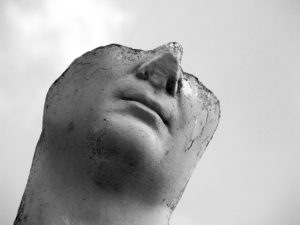Smell [Show Notes]

Smell Basics
Air goes in your nose and flows over the smell sensors.
Your nose and sinus cavities act as a resonating chamber for your voice. That’s why you sound funny when you hold your nose or when your nose is stopped up from a cold or allergies. This is important in talking and singing.
What makes something smell?
Volatile molecules evaporate at normal temperatures and pressures, so actually molecules of the thing are in the air and available to go in your nose. Don’t think about this too hard….
The smelling sensors are on the roof of the nasal cavity –> olfactory receptors (olfactory is the fancy word for smelling). The molecules fit into the receptors like a key in a key hole. Our brain likes to categorize things, and so certain compounds have similar structures and get lumped together (“smells like eggs” but you know it’s not real eggs).
The olfactory receptors send the signals to the olfactory bulb (which is the area in the brain that translates all the smells and allows you to identify a smell). It’s not a very long trip….
The olfactory bulb is a part of the limbic system (the emotion center). this is why smell is more strongly connected to emotions and memory – even stronger than sight and sound.
Smell Tidbits
If you go to the perfume counter at a department stores, you’ll find that they all start smelling the same. The perfume department will have coffee beans because it helps clean out the receptors.
Coffee-scented, caffeinated perfume <– free idea!!
Inflammation and mucus congestion blocked off the receptors.
No concrete evidence of why pregnant women get a “super smeller” during pregnancy.
One rogue molecule won’t make you smell something.
Connect with me
Support us on Patreon
*NEW* Join the Pharmacist Answers Podcast Community on Facebook
Subscribe: iTunes, Stitcher, GooglePlay, TuneIn Radio
Music Credits: “Radio Martini” Kevin MacLeod (incompetech.com) Licensed under Creative Commons: By Attribution 3.0 http://creativecommons.org/licenses/by/3.0/



